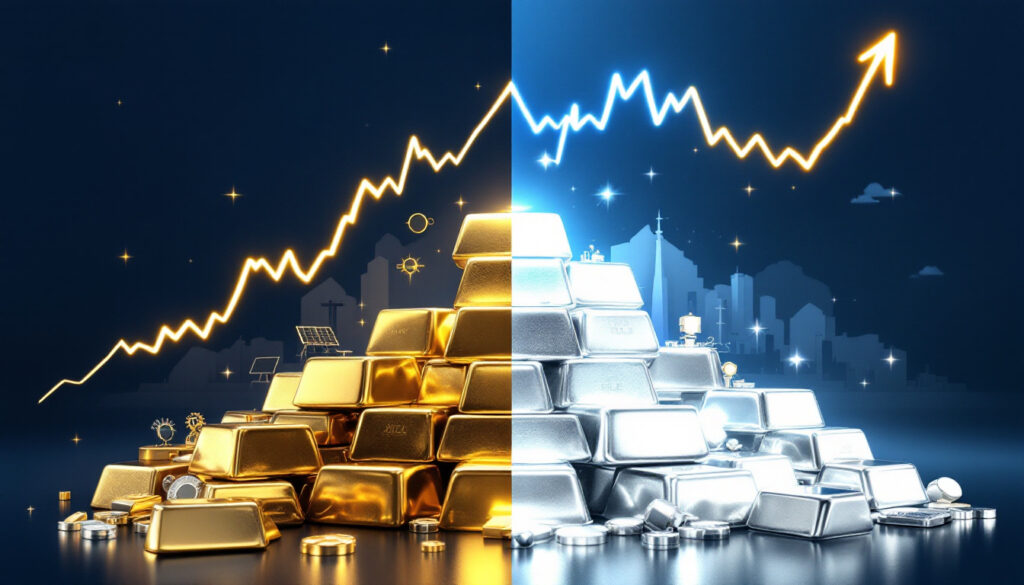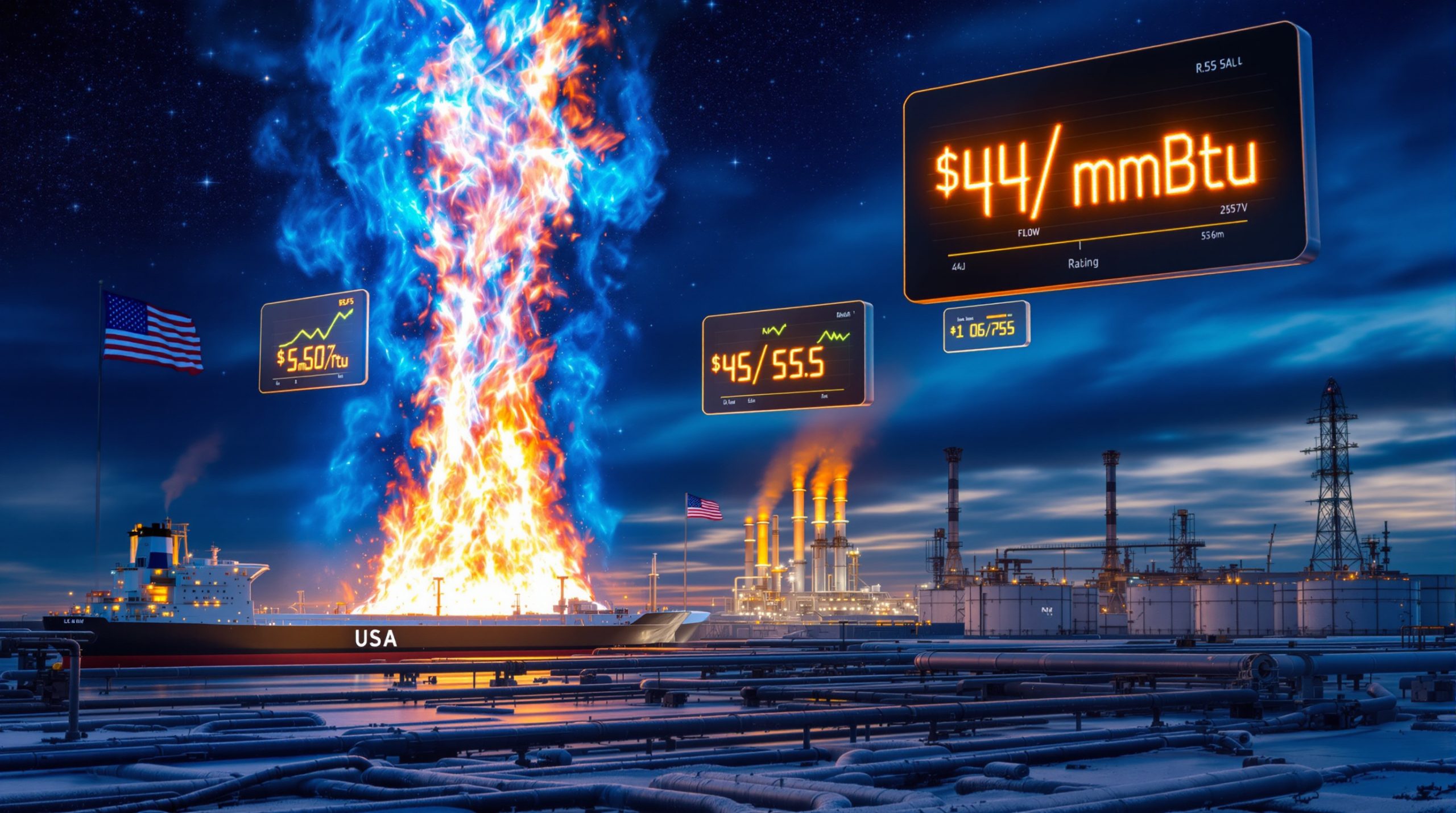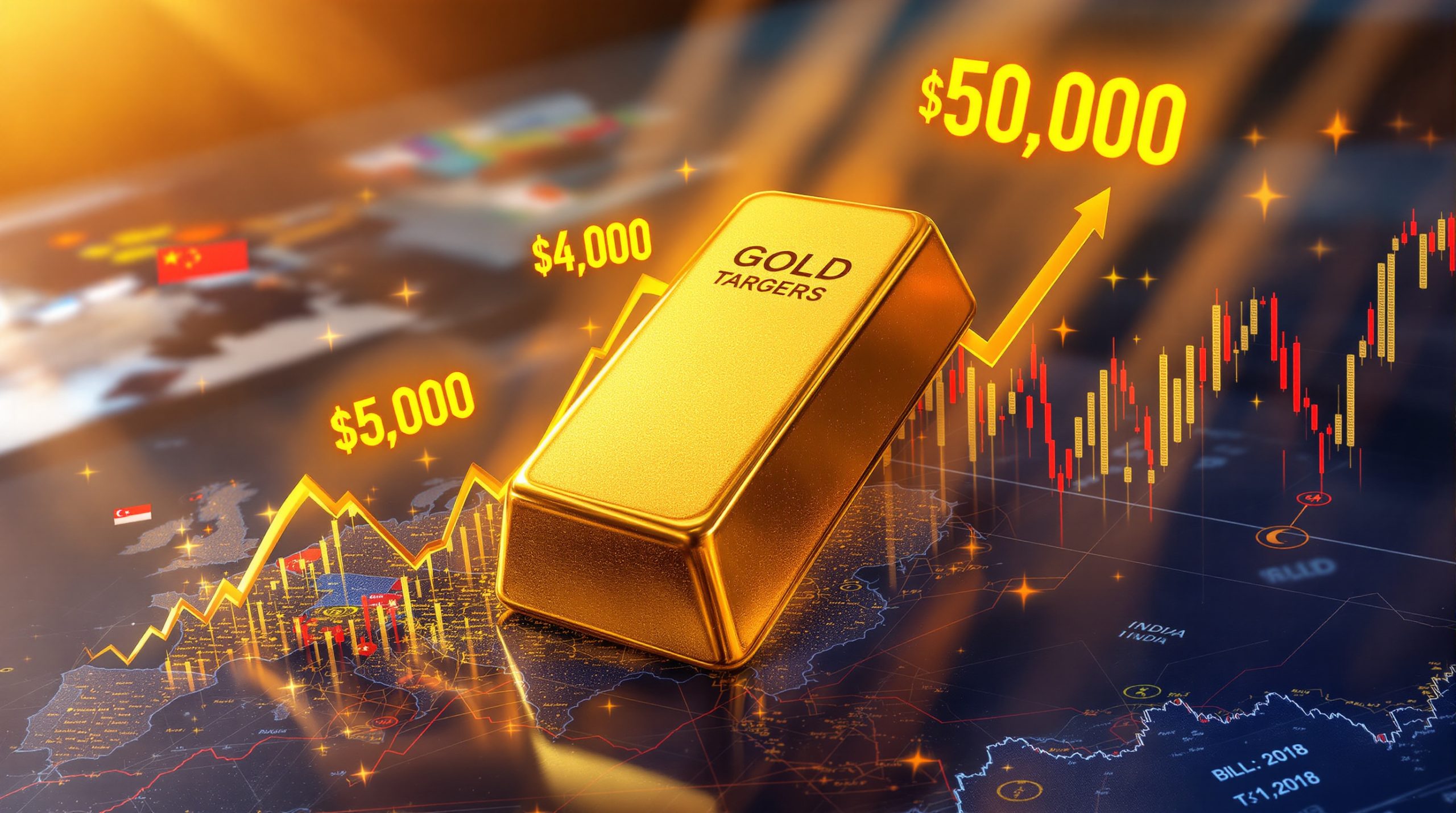What Are the Current Trends in Gold and Silver Prices?
Recent Gold Price Performance
Gold has established new support zones after surpassing previous resistance levels, with the gold-to-S&P 500 ratio reaching its highest point in three years. This shift reflects a fundamental recalibration of investor sentiment amid concerns over fiat currency stability. The metal's upward trajectory correlates with Treasury funding challenges and anticipated Federal Reserve interventions, which are expected to intensify by August 2025.
Rather than merely consolidating as some analysts have suggested, gold appears to be building a foundation for its next significant move upward. Technical indicators show bullish momentum with the metal consistently closing above its 50-day moving average, suggesting sustained institutional buying pressure. Recent gold price highs have reinforced this positive outlook among market participants.
Silver Price Movement Patterns
Silver's price swings remain more pronounced than gold's, driven by its dual role as both an industrial commodity and monetary asset. While industrial applications in sectors like solar energy and electronics bolster demand, speculative trading amplifies short-term volatility. The metal's 30-day historical volatility currently exceeds gold's by approximately 40%, creating opportunities for tactical investors.
This characteristic volatility presents both challenges and opportunities. For nimble investors, silver's wider price swings offer enhanced profit potential during uptrends. However, these same swings can unnerve less experienced market participants who may exit positions prematurely during normal corrective phases. The recent silver market squeeze has further highlighted this dynamic in the precious metals market.
Key Price Drivers for Precious Metals
Several fundamental factors currently influence precious metals pricing:
- Treasury funding mechanisms and their impact on bank reserves have become increasingly important as liquidity conditions tighten
- Federal Reserve monetary policy decisions continue to signal a potential shift toward accommodation
- Industrial demand growth, particularly for silver in green energy technologies, provides price support during market downturns
- Currency debasement concerns intensify as government debt levels reach historic highs
- Global economic uncertainty including geopolitical tensions and supply chain disruptions
The interplay between these factors creates a complex but ultimately supportive environment for both metals, with monetary concerns primarily benefiting gold while industrial applications provide additional tailwinds for silver.
How Do Monetary Policies Affect Precious Metals Prices?
Federal Reserve Actions and Gold Correlation
The Federal Reserve's balance sheet operations directly influence gold's monetary premium. When Treasury General Account drawdowns reduce bank reserves (currently at $3.2 trillion), the Fed typically intervenes through reverse repos or asset purchases. Such liquidity operations devalue fiat currencies proportionally, creating upward pressure on gold's dollar-denominated price.
This relationship explains why gold tends to perform strongly during periods of monetary expansion. When central banks increase liquidity to stabilize financial markets, the increased money supply effectively dilutes the purchasing power of fiat currencies, enhancing gold's appeal as a store of value. The latest gold price forecast suggests this correlation remains strong.
Treasury Funding Challenges
By Q3 2025, the U.S. Treasury faces a projected $1.5 trillion funding gap, requiring either debt issuance or monetary expansion. Historical analysis shows that each 10% increase in M2 money supply correlates with a 6.8% rise in gold prices over subsequent quarters.
This funding challenge creates a potential catalyst for precious metals. When the Treasury draws down its general account to meet obligations, it effectively injects liquidity into the financial system. Conversely, when it issues new debt, it absorbs liquidity. Either scenario—direct liquidity injection or Fed intervention to support debt issuance—typically benefits precious metals.
Historical Monetary System Transitions
The dollar's evolution from silver-backed (1792–1873) to gold-backed (1879–1971) and finally to fiat currency provides critical context. During previous transitions, the gold-silver ratio reverted to 16:1, suggesting potential convergence if current fiat systems destabilize.
"The current monetary system has evolved from its origins as a silver derivative, then a gold derivative, and finally to the current fiat system. Understanding this progression helps contextualize current price movements and potential future scenarios." — Monetary historian observation
These historical transitions offer valuable insight into potential future scenarios. While past patterns don't guarantee future outcomes, they provide a framework for understanding how monetary metals behave during systemic stress periods. Current gold bond trends indicate this relationship continues to evolve.
What Is the Relationship Between Industrial Demand and Silver Prices?
Green Energy and Technology Applications
Silver's industrial use has grown 8% annually since 2020, with photovoltaic panels consuming 110 million ounces annually (30% of total demand). Electric vehicle production now accounts for 5% of global silver consumption, primarily in battery and sensor components.
The metal's unique properties—including the highest electrical conductivity of any element and excellent thermal conductivity—make it indispensable in several growing industries:
- Solar panel production requires silver paste for efficient electrical connections
- Electric vehicle components including battery management systems and autonomous driving sensors
- Electronics manufacturing for everything from smartphones to medical devices
- Antimicrobial applications in healthcare settings and consumer products
This industrial demand provides a floor for silver prices that doesn't exist to the same degree for gold, whose industrial applications remain more limited.
Supply-Demand Balance Analysis
Despite rising industrial demand, mining productivity improvements have maintained aggregate supply growth at 3% annually. This dynamic explains why silver's price ratio to gold has remained above 80:1 despite increased technological adoption.
An often overlooked factor is that industrialized societies developing new silver-intensive technologies simultaneously develop enhanced extraction and recycling capabilities. This technological symmetry helps explain why industrial demand alone hasn't compressed the gold-silver ratio to historical norms.
Long-term Price Ratio Implications
The historical 16:1 gold-silver ratio during monetary resets reflects mining output parity in industrialized economies. Modern mining techniques enable silver production at 8:1 relative to gold by weight, suggesting structural support for ratio compression.
This relationship becomes particularly relevant during periods of monetary stress or system reconfiguration. While industrial demand fluctuates with economic cycles, monetary demand tends to surge during systemic crises, potentially driving the ratio toward historical norms.
How Should Investors Allocate Between Gold and Silver?
Portfolio Volatility Management
Gold's 60-day realized volatility of 12% compares favorably to silver's 22%, making it preferable for risk-averse investors. Allocating 70–80% to gold provides stability, while silver's 40–50% allocation range offers higher upside potential during liquidity crises.
This volatility differential creates important psychological considerations. Many investors intellectually understand silver's superior percentage gain potential but underestimate the emotional challenge of weathering its dramatic price swings. A realistic assessment of one's risk tolerance should guide allocation decisions.
Practical Allocation Strategies
Effective precious metals portfolios typically incorporate several components:
- Physical Holdings: Maintain one year's living expenses in silver for currency hedge purposes
- Gold Allocation: Use gold ETFs (e.g., GLD) or allocated bullion for 60–70% of precious metals exposure
- Ratio Rebalancing: Adjust allocations quarterly when the gold-silver ratio deviates >10% from 5-year averages
- Liquidity Tiers: Structure holdings with different liquidity profiles, from immediately accessible bullion coins to vault-stored larger bars
This tiered approach addresses both protection and growth objectives while maintaining practical access to resources during potential financial system disruptions. Developing proper investment strategies is crucial for long-term success in the precious metals market.
Physical Ownership Considerations
Storage costs for physical metals average 0.5–1.0% annually, while ETF expense ratios range from 0.2–0.4%. Liquidity premiums for 100oz silver bars currently stand at 8% over spot, versus 3% for 1oz gold coins.
Physical ownership offers unique advantages during financial stress periods but requires addressing practical concerns:
- Secure storage solutions ranging from home safes to professional vaulting services
- Liquidity needs and premium costs when converting back to currency
- Authentication considerations including purchasing from reputable dealers
- Insurance requirements for significant holdings
These practical considerations often lead investors to a hybrid approach combining some physical holdings with professionally managed options.
What Signals Indicate Potential Major Moves in Precious Metals?
Financial System Stress Indicators
Monitoring the "plumbing" of the financial system provides early warning signals of potential disruptions that could trigger precious metals price movements:
- Repo Rates: Spreads exceeding 50 basis points signal funding stress
- Bank Reserves: Declines below $2.5 trillion typically precede Fed intervention
- Treasury Auctions: Bid-to-cover ratios <2.0 indicate weakening demand for sovereign debt
- Credit Market Stress: Widening corporate bond spreads often precede flights to quality
These technical indicators often provide advance warning of systemic stress before it becomes apparent in mainstream financial news. Many investors track these metrics using resources like live price charts to inform their investment decisions.
Monetary System Evolution Markers
Central bank gold purchases exceeding 500 tonnes annually (2023: 1,136 tonnes) suggest institutional flight from fiat systems. Private sector adoption of gold-backed cryptocurrencies (e.g., PAXG) has grown 300% since 2023, indicating grassroots monetary innovation.
These trends reflect a broader reassessment of monetary systems at both institutional and retail levels. Sovereign wealth funds increasing gold allocations and retail investors adopting precious metals-backed payment systems represent complementary aspects of this evolution.
Technical Price Analysis
Gold's 100-week moving average ($2,150/oz) now acts as support, while silver faces resistance at $32/oz. Breakouts above these levels with >10% volume increases often precede sustained rallies.
Technical analysis can help identify:
- Support and resistance levels that influence short-term price action
- Consolidation patterns that often precede major moves
- Momentum indicators showing strengthening or weakening trends
- Relative strength comparisons between precious metals and other asset classes
While fundamental factors drive long-term precious metals prices, technical analysis provides valuable guidance for entry and exit timing. Monitoring metal price trends is essential for identifying potential breakout opportunities.
How Do Gold and Silver Function as Monetary Assets?
Historical Monetary Role
The U.S. Coinage Act of 1792 fixed the gold-silver ratio at 15:1, a benchmark that persisted through most of the 19th century. This historical precedent underscores metallic ratios' resilience during fiat collapses.
Throughout history, these monetary metals have served as the foundation of stable monetary systems. Their scarcity, divisibility, durability, and universal recognition made them ideal monetary instruments long before the advent of modern financial systems.
Currency Debasement Protection
Each 1% increase in the Fed's balance sheet correlates with 0.7% gold appreciation over six months. Fiat holders are effectively short precious metals, making physical ownership critical for purchasing power preservation.
This protective function becomes particularly valuable during periods of monetary experimentation. When central banks expand their balance sheets through quantitative easing or governments increase deficit spending, precious metals typically outperform fiat currencies.
Potential Future Monetary Functions
Gold's role in central bank reserves (currently 15% of global totals) could expand to 25% by 2030 if dollar hegemony erodes. Blockchain tokenization projects (e.g., JPMorgan's JPM Coin) may integrate gold settlement within decade.
While a complete return to the gold standard seems unlikely, increased integration of precious metals into the financial system remains possible through:
- Central bank digital currencies potentially incorporating gold backing
- Private sector payment systems using precious metals as settlement layers
- International trade agreements utilizing gold for balance of payments settlements
- Regional currency arrangements based on metallic standards
These developments would represent partial re-monetization rather than full restoration of historical metallic standards.
FAQ About Gold and Silver Investments
What causes silver's volatility compared to gold?
Silver's smaller market cap ($1.5T vs. gold's $13T) amplifies price impacts from fund flows. Industrial demand cyclicality adds volatility absent in gold's predominantly monetary role.
As the "people's money," silver historically experiences more dramatic percentage moves than gold during both bull and bear markets. Its smaller market size means equivalent dollar flows create larger percentage price changes, contributing to its reputation for volatility.
How might Fed policies impact metals in 2025?
A 100-basis-point rate cut could boost gold 18% and silver 35% based on 2019–2020 precedents. Balance sheet expansion exceeding $2 trillion/year may trigger hyperinflationary gold and silver prices revaluation.
The timing of these interventions will be crucial for investors watching price movements. Markets tend to anticipate policy shifts, with precious metals often moving before official announcements, making proactive positioning essential.
What gold-silver ratio suits conservative investors?
Historical analysis favors 70% gold/30% silver allocations, balancing stability with crisis upside. During the 2008 crash, this mix outperformed pure gold holdings by 22%.
More conservative investors might prefer 80% gold/20% silver, while those comfortable with volatility might increase their silver allocation to 40-50% to capitalize on its potentially greater percentage gains during monetary system stress periods.
How do physical metals compare to mining stocks or ETFs?
Each investment vehicle offers distinct advantages and limitations:
| Investment Type | Advantages | Limitations |
|---|---|---|
| Physical Metals | No counterparty risk, direct ownership | Storage costs, insurance needs, liquidity constraints |
| Mining Stocks | Operational leverage to metal prices, dividend potential | Company-specific risks, management quality concerns |
| ETFs/Funds | Convenience, liquidity, no storage requirements | Potential custody risks, management fees, tracking error |
A diversified approach incorporating elements of each category often provides the best balance for most investors, addressing different objectives within a comprehensive precious metals strategy.
Strategic Positioning in the Precious Metals Market
The current environment for gold and silver presents both challenges and opportunities for investors. While short-term price consolidation remains possible, longer-term fundamental factors suggest continued strength in precious metals markets. Treasury funding pressures, central bank liquidity operations, and growing industrial demand create a supportive backdrop for both metals.
Investors should consider their individual risk tolerance, investment timeline, and portfolio objectives when determining their optimal allocation between gold and silver. Understanding the monetary history and potential future roles of precious metals provides valuable context for investment decisions. By monitoring key indicators of financial system stress and maintaining appropriate physical metal holdings, investors can position themselves advantageously for various economic scenarios.
The distinction between gold's role as primarily monetary and silver's dual industrial-monetary function remains critical for allocation decisions. Gold's lower volatility makes it suitable as a portfolio stabilizer and long-term store of value, while silver's higher volatility offers greater percentage gain potential during periods of monetary stress.
"In scenarios of extreme financial stress, gold and silver could reassume more direct monetary functions. While a complete return to a precious metals standard seems unlikely, increased integration into the financial system remains possible through various mechanisms."
By developing a balanced approach to precious metals investment—incorporating both physical holdings and paper instruments according to individual circumstances—investors can enhance portfolio resilience while positioning for potential monetary system evolution.
Want to Profit from Major Mineral Discoveries on the ASX?
Discovery Alert's proprietary Discovery IQ model delivers real-time notifications on significant ASX mineral discoveries, instantly empowering you to identify actionable opportunities before the broader market recognises them. Begin your 30-day free trial today at Discovery Alert to secure your market-leading advantage.




